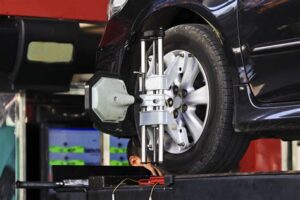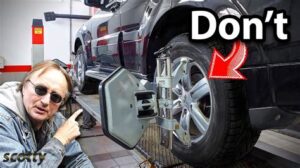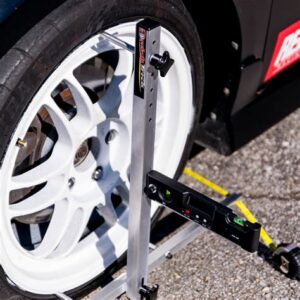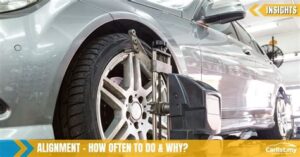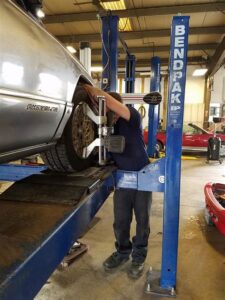Maintaining your vehicle’s alignment is crucial for ensuring a smooth and safe driving experience. Misalignment can lead to uneven tire wear, compromised handling, and decreased fuel efficiency, making it a key aspect of regular car maintenance. But how often should you check your car’s alignment? In this article, we’ll explore the ins and outs of vehicle alignment, including its significance, the frequency of checks needed for optimal performance, and the various factors that can impact alignment needs. From recognizing the signs that your car may require alignment to reaping the benefits of regular maintenance, we aim to equip you with the knowledge needed to make informed decisions about your vehicle’s health. Dive in to discover how proper alignment not only enhances your driving experience but also extends the lifespan of your tires and vehicle overall.
Understanding Alignment: What It Is and Why It Matters
Car alignment refers to the adjustment of a vehicle’s suspension system, which connects the vehicle to its wheels. Proper alignment ensures that your wheels are positioned correctly, allowing for optimal tire performance and handling. When your vehicle is aligned correctly, it drives straight, and tires wear evenly, contributing to improved fuel efficiency and vehicle safety.
There are three primary angles involved in wheel alignment:
| Angle Type | Description |
|---|---|
| Caster | Forward or backward tilt of the steering axis; influences steering stability. |
| Camber | The angle of the wheels in relation to the road; affects tire wear and grip. |
| Toe | The angle at which the wheels turn in or out relative to the vehicle’s centerline; directly impacts tire wear. |
Understanding alignment is crucial because it not only enhances driving comfort but also plays a key role in vehicle safety. Misalignment can lead to poor handling, which becomes dangerous, especially at higher speeds. Moreover, neglecting alignment can lead to uneven tire wear, requiring more frequent replacements, which ultimately impacts your budget.
To maintain your vehicle’s efficiency and handling, regular checks are recommended. Though there is no strict rule on how often to align your car, many experts suggest having your alignment checked every 6,000 to 10,000 miles, or when you notice any symptoms indicating misalignment.
How Often Should You Check Your Car’s Alignment?
Determining how often you should check your car’s alignment is essential for maintaining optimal vehicle performance and safety. Generally, it’s recommended to have your alignment checked every 6,000 miles or at least once a year. However, various factors can affect this frequency, and it’s crucial to consider those as you decide on your maintenance schedule.
In addition to the mileage guideline, you should also consider having your alignment checked after any major events that could affect your vehicle’s suspension and steering, such as:
- Hitting a significant pothole or curb
- Experiencing unusual tire wear
- Noticing your vehicle pulling to one side while driving straight
- Upgrading or replacing suspension components
By regularly assessing how often you check and maintain your car’s alignment, you can anticipate risks and prevent costly repairs down the line, ultimately extending the life of your tires and improving fuel efficiency.
Factors Affecting Alignment Frequency for Your Vehicle
Several factors influence how often you should check your car’s alignment. Understanding these factors can help you maintain optimal vehicle performance and ensure safety on the road. Below are key considerations:
- Driving Conditions: Frequent driving on rough, uneven surfaces or pothole-laden roads can lead to alignment issues more quickly than driving on smooth highways.
- Vehicle Type: Certain vehicles, especially those with performance tires or lower clearance, may require realignment more frequently than standard vehicles.
- Tire Wear: Uneven tire wear can be a sign of misalignment. Regular tire inspections can help determine how often you should check alignment.
- Adjustments and Repairs: If you have recently had any suspension work or adjustments made to your vehicle, it’s advisable to have the alignment checked afterward.
- Driving Habits: Aggressive driving and hard cornering can impact alignment. If you often drive in this manner, consider more frequent check-ups.
By taking these factors into account, you can make an informed decision about how often to schedule alignment checks for your vehicle, ensuring it remains safe and functional for your driving needs.
Signs That Indicate Your Car Needs Alignment Soon
Maintaining proper alignment is essential for the safety and performance of your vehicle. Here are some signs that indicate it may be time to check your car’s alignment:
- Uneven Tire Wear: If you notice that your tires are wearing unevenly, it could be a sign that your alignment is off. Regularly inspecting your tires can help catch this issue early.
- Pulling to One Side: When driving, if your car pulls to the left or right without you applying pressure to the steering wheel, it’s a strong indicator of misalignment.
- Steering Wheel Off Center: If your steering wheel is not centered while driving straight, it suggests that your wheels may not be aligned properly.
- Vibration in the Steering Wheel: Excessive vibration can also signal alignment issues. If you experience noticeable vibrations through the steering wheel, it’s worth investigating further.
- Check Engine Light: Occasionally, a misaligned vehicle can trigger the check engine light. It’s advisable to have the alignment checked if the light comes on.
By recognizing these signs, you can address alignment issues promptly to enhance your driving experience and ensure safety on the road. Remember, regular inspections are key to maintaining proper alignment and overall vehicle health, thus determining how often you need to take action.
The Benefits of Regular Car Alignment Maintenance
Maintaining proper alignment on your vehicle is crucial for numerous reasons. Regular car alignment maintenance not only ensures a smoother driving experience but also contributes significantly to vehicle safety and performance. Here are some key benefits of staying on top of your alignment:
- Enhanced Tire Longevity: Keeping your tires aligned properly helps them wear evenly. This can significantly extend their lifespan, reducing the need for premature replacements.
- Improved Fuel Efficiency: A well-aligned car requires less energy to travel in a straight line. This means you’ll use less fuel, saving you money at the pump.
- Better Handling and Control: Proper alignment ensures that your vehicle handles well, which is essential for safe driving, especially in adverse weather conditions.
- Increased Safety: Misalignment can lead to dangerous situations. When your car pulls to one side, it compromises your control over the vehicle, increasing the risk of accidents.
- Lower Maintenance Costs: By avoiding the excessive wear associated with poor alignment, you can save money on repairs and replacements in the long run.
Understanding how often to check your car’s alignment can greatly benefit your vehicle’s overall performance and longevity. Integrating alignment checks into your regular maintenance schedule can contribute to a safer, more reliable driving experience.
Frequently Asked Questions
What is car alignment?
Car alignment refers to the adjustment of a vehicle’s wheels to ensure they are positioned correctly relative to each other and the road.
How often should I get a wheel alignment?
Most experts recommend checking your car’s alignment at least once a year, but it may need to be done more frequently depending on driving habits and road conditions.
What are the signs that my car needs an alignment?
Common signs include uneven tire wear, the steering wheel being off-center, the vehicle pulling to one side, and a vibrating steering wheel.
Can I perform a wheel alignment myself?
While some tools and kits are available for DIY alignment, it is generally recommended to have a professional perform the alignment for the best accuracy.
Does bad alignment affect gas mileage?
Yes, poor alignment can lead to decreased fuel efficiency as it causes the engine to work harder to compensate for misaligned wheels.
How long does a wheel alignment take?
A typical wheel alignment job can take anywhere from 30 minutes to an hour, depending on the vehicle and any adjustments needed.
Is wheel alignment necessary after replacing tires?
Yes, it is highly recommended to get a wheel alignment after installing new tires to ensure even wear and proper handling.
